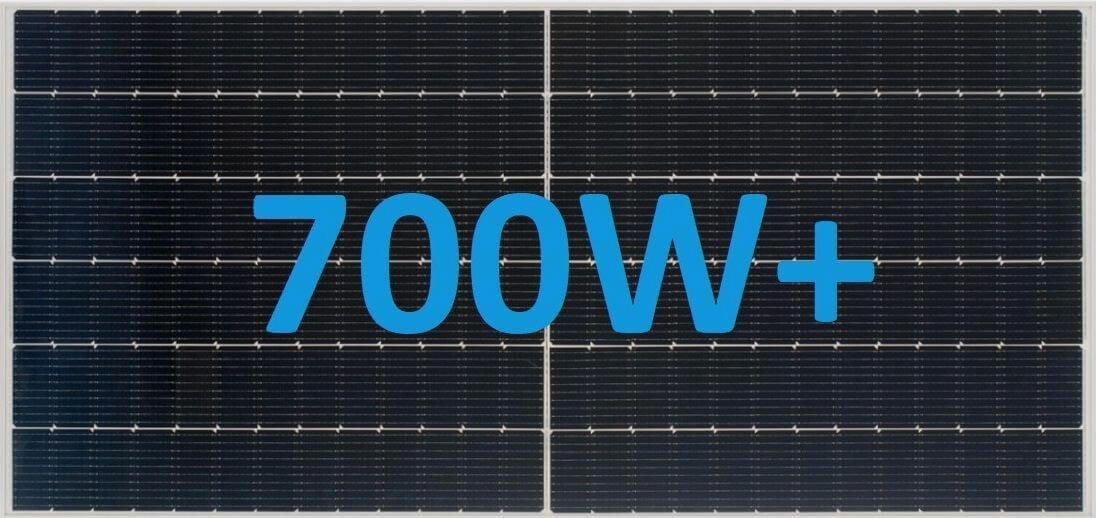Solar Panel Warranty Explained
For those new to solar, understanding solar panel warranties can be quite confusing due to the two very distinct warranty conditions: a product warranty and a performance warranty. Like most products and appliances, solar panels have a manufacturer’s product warranty that protects against failures due to faulty materials or workmanship. Solar panels also have a secondary warranty condition, known as the performance warranty, which accounts for a slight loss in performance or degradation over the life of the panel.
1. Product Warranty
The product warranty is the manufacturer’s warranty that protects the customer against defects that may have occurred due to manufacturing errors, quality issues, or component and material failures. This means the manufacturer must either replace or provide a refund for solar panels that fail within the product warranty period. In general, solar panel manufacturers must provide a minimum 10-year product warranty period; however, a growing number of premium manufacturers now offer 15, 20, and even 25-year product warranties.
2. Performance Warranty
The performance warranty also referred to as the power output warranty, ensures that the solar panel still produces a minimum amount of power output after the expected 25-year life of a panel. Once installed outside and exposed to sunlight, UV radiation, and high temperatures, all solar panels slowly reduce power output over time due to a well-known phenomenon called Light Induced Degradation or LID. Typically, 3% is lost in the first year, while the annual loss over the remaining 24 years is much less, at around 0.3% to 0.7% per year.
The industry standard is 80-84% retained power output after 25 years. However, some high-end manufacturers, such as Sunpower, LG, and REC guarantee as much as 88% to 92% remaining power output on most modules after 25 years of use. There are also a growing number of manufacturers offering 30-year performance warranties on the unique dual glass and bifacial solar modules.
Solar Panel Warranty Comparison Chart
The yellow line indicates the minimum power rating after 25 years of use as specified under the various manufacturer’s performance warranty documents. Note, without an obvious defect, it is almost impossible to determine if the rated power output of a panel is within tolerance without specialised equipment. With this in mind, we recommend taking the manufacturer’s reputation and service history into consideration. A local support office or service centre should also be a must.
Solar panel warranty comparison chart showing Product and performance warranties from the leading manufacturers.
Performance warranty explained
Rooftop-mounted solar panels are generally very reliable, have no moving parts and require very little maintenance. However, it is normal for solar PV cells to experience a small amount of degradation over time. Solar panels are expected to perform under a wide variety of very extreme environments, from freezing winter conditions to very high summer temperatures, high humidity, wind, and severe UV radiation, not to mention salt mist corrosion in coastal seaside locations. Due to these extreme conditions, all solar panels experience minor degradation due to several known phenomena explained in detail here.
Example, solar panel performance warranty chart showing degradation over 25 years of use - Image credit Longi Solar
Solar panel degradation rates vary significantly depending on the type of cell-substrate used by the manufacturer of which there are two main types, P-type and N-type. Panels with the least amount of degradation are those built with a high-grade N-type silicon substrate. These high-performance N-type cells have a lower rate of light induced degradation and can expect to lose only 0.5% per year, which equates to close to 90% retained power output after 25 years of use. Due to the lower cost of production, most manufacturers use P-type cells which have a slightly higher rate of degradation at approximately 0.8% per year.
How to make a warranty claim
The first thing you should do is contact your solar installer or retailer, they should be able to arrange an inspection or even remotely monitor your system to help diagnose a problem. If they find a fault or issue with the panels, and it is within the solar panel manufacturers warranty period, then the installer should take care of the warranty claim for you. If you cannot get hold of your solar installer then you can hire a solar specialist to inspect the system and provide you with some advice and a condition or fault report.
Before a warranty claim is accepted, the solar panel manufacturers will require some documentation about the problem and request details about the solar installation and the installer, plus photo’s of the installation to ensure it meets the panel manufacturers requirements. Unfortunately, some solar systems are not installed correctly, such as incorrect mounting clamp positions which can compromise the solar panel’s structural integrity. If this is the case, an improper installation may lead to the manufacturer rejecting the claim. Also, it is worth noting that no one should ever STEP or walk on the solar panels during installation, cleaning or inspection as this will often lead to the formation of micro-cracks which can void your warranty.
Are your solar panels underperforming?
Unless there are obvious signs of panel failure, such as cracked glass, it is difficult for an untrained person to determine if the solar panels are working correctly. When a solar panel is manufactured, the power output in Watts (W) is measured using a high-powered flash test producing exactly 1000W per square meter in a controlled environment at a temperature of 25°C. However, in the real world, it is very hard to obtain accurate measurements as the panel surface temperature is typically much higher than 25°C when exposed to sunlight, plus the amount of sunlight (solar irradiance) can vary significantly depending on the season, time of day, dust, smog, atmospheric losses and other factors.
Solar panels can suffer from various faults and performance issues - See our detailed solar fault finding guide.
For the reasons explained above, the best way to measure your solar performance is to check the daily production levels (measured in kWh) of the solar system and compare them to previous days, months, and years. Most modern solar inverters have some form of system monitoring that measures the amount of solar generation. This data is often logged in an App or online portal, which can be used to assess the performance over time. This can also be compared to other systems in your area, but be sure to account for the orientation of the solar panels, as this can greatly affect the outcomes. Solar Analytics is a third party add-on device that has the ability to analyse your solar performance and alert you of any performance issues.
Solar system monitoring using Solar Analytics can automatically notify you if your solar system is not operating correctly.
Reasons for poor solar performance
If your solar system is underperforming, it could be due to many reasons, some of which may have nothing to do with the solar panels themselves. One of the more common reasons for underperformance is grid voltage issues. High grid voltages will cause the solar inverter to shut down for a short amount of time and continue cycling on and off until the grid is back within tolerance - this often occurs during the day when solar generation is at its peak.
Of course, solar panels can also underperform for several reasons or defects. If you suspect your solar panels are not working correctly, you should first check your solar inverter is operating with no faults or warning lights. Next, you should obtain your total daily solar generation (kWh) and check this is approximately correct for the time of year. We have a free solar calculator tool that can help you determine how much solar generation you should expect based on location. In most locations, you will notice a significant reduction during the winter months due to the shorter days and poor weather, also shading can have a much bigger impact during winter as the sun is much lower in the sky and shadows from trees and other obstacles will be larger. Also, check that you don’t have a build-up of dirt and leaves on the panels. Once all the obvious reasons for underperformance have been eliminated, you may have a problem with your panels, which is often very difficult to diagnose without specialized equipment and training. See our solar system fault-finding guide for more information.






We examine the latest solar panels and explain how advanced PV cell technologies help improve performance and efficiency, plus we highlight the most advanced panels from the leading manufacturers. Learn about recent innovations such as micro busbars, high-density heterojunction and TOPCon N-type cells.